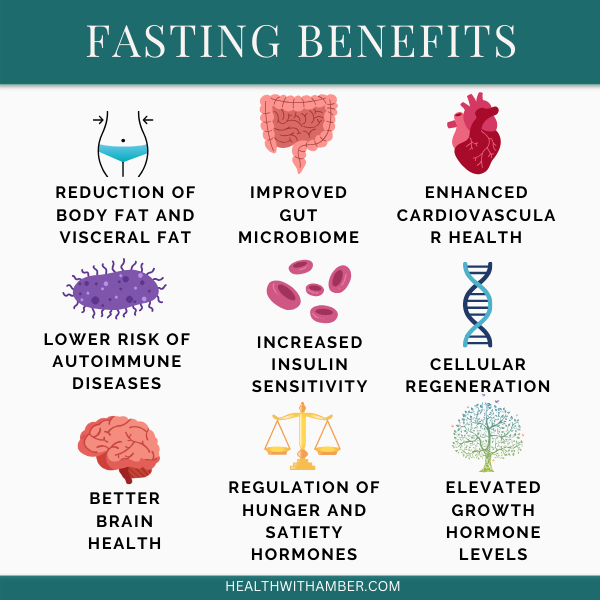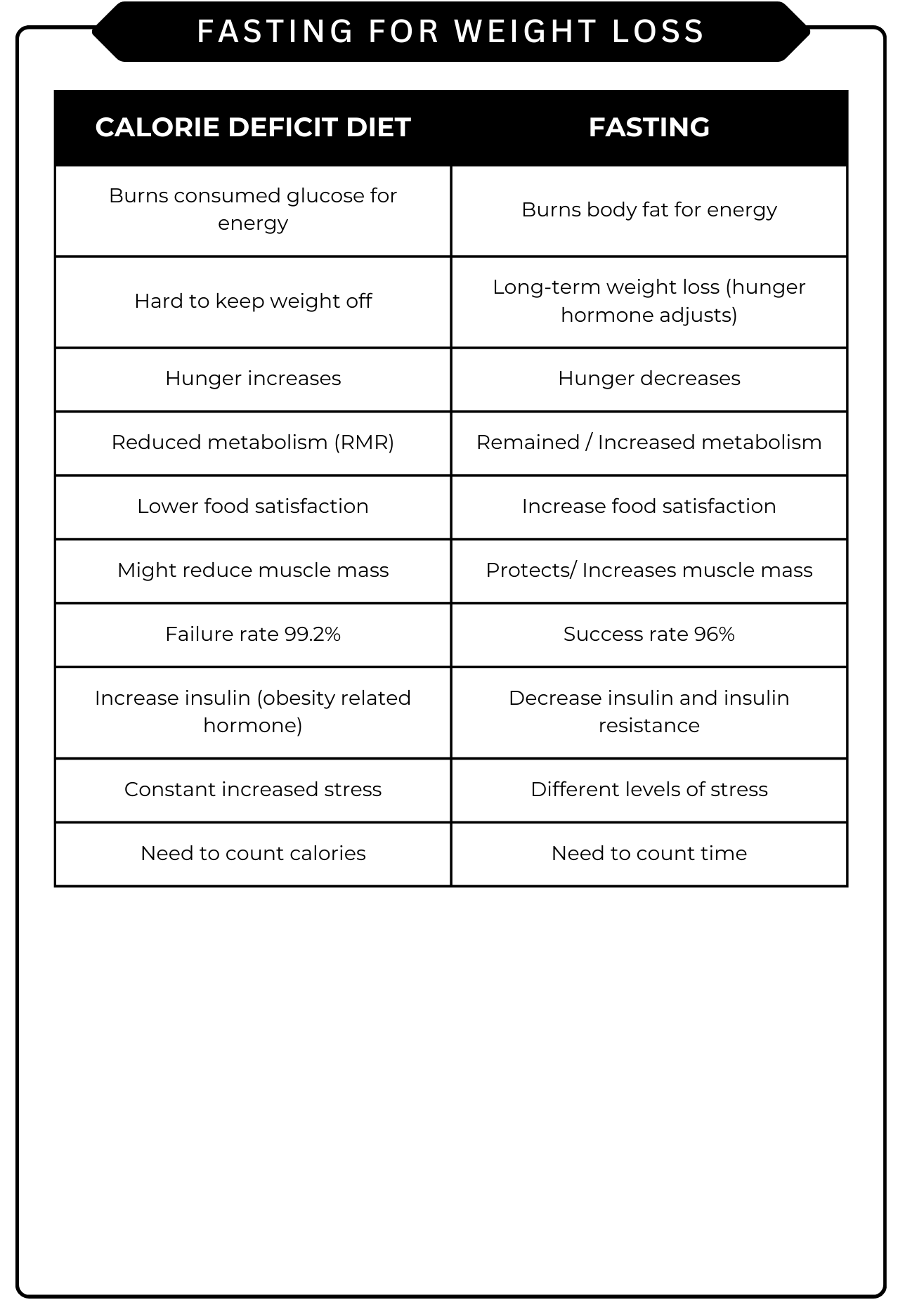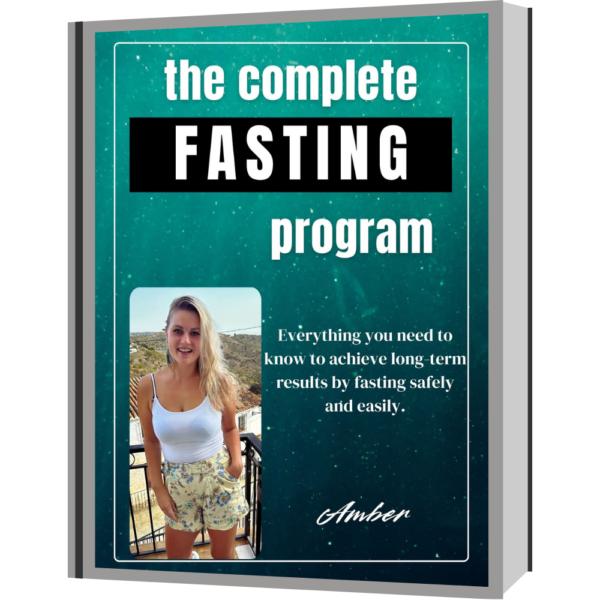Intermittent fasting is becoming an increasingly popular wellness practice that can help with weight loss, improve health, and simplify lifestyle choices. However, it’s important to choose the right method and practice it safely.

What is Intermittent Fasting?
Intermittent fasting (IF) is a dietary approach focusing on when you eat rather than what or how much you eat. This eating pattern defines eating and fasting periods.
Fasting has been a natural part of human history. Some practice it for health reasons, while others do so for religious or cultural traditions.
The most popular IF method is the 16:8 method, where you fast for 16 hours and eat within an 8-hour window. However, to successfully implement IF based on your goals, it’s essential to understand more than just the method.
Health Benefits of Fasting

Intermittent fasting is widely recognized for its numerous health benefits, and research continues to uncover new advantages.
After analyzing nearly 80 scientific studies, we have found that fasting:
✔️ Lowers insulin levels and improves insulin resistance
✔️ Supports brain health
✔️ Helps prevent and manage autoimmune diseases
✔️ Improves cardiovascular health
✔️ Enhances gut microbiome
✔️ Promotes cell regeneration
✔️ Regulates hunger and satiety hormones
✔️ Reduces visceral and overall body fat
✔️ Increases growth hormone levels
Types and Methods of Fasting
Fasting can be categorized into intermittent fasting and extended fasting. Extended fasting begins when you fast for 24 hours or more. Intermittent fasting includes two main types:
Time-Restricted Eating (TRE)
Expressed as X:Y, where X is fasting hours and Y is eating hours. The total must add up to 24 hours.
🔹 Most Popular – 16:8 Method
Eating 2–3 meals per day within an 8-hour window.
Benefits:
✔️ Reduces inflammation
✔️ Lowers insulin levels
✔️ Helps treat polycystic ovary syndrome (PCOS)
✔️ Gradually decreases body fat
🔹 Advanced – 23:1 (OMAD – One Meal a Day)
Eating only once per day. Not recommended more than 3 times per week.
Benefits:
✔️ Accelerates fat-burning
✔️ Significantly lowers insulin levels
✔️ Improves mental resilience
✔️ Stimulates cell regeneration
✔️ Reduces chronic disease risk
Alternate-Day Fasting (ADF)
Also known as the up-and-down fasting method. Expressed as X:Y, where X is eating days and Y is fasting days within a 7-day cycle.
🔹 Most Popular – 5:2 Method
For 2 fasting days per week, consume up to 500 kcal (women) or 600 kcal (men) or fully fast. On the remaining 5 days, eat a regular diet without calorie restriction.
🔹 Alternative – Every Other Day Fasting
Consume up to 500 kcal (women) or 600 kcal (men) or fully fast every other day while eating normally on alternating days.
These methods primarily focus on temporary weight loss. However, if your diet on eating days is unhealthy or excessive, weight loss may not occur.
Get the Complete Fasting Program
To understand fully all possible fasting methods, how to practice them. Each offers specific health benefits such as gut rest, chronic disease prevention, and detoxification.
Fasting Styles (What Can You Consume While Fasting?)
Different fasting styles determine what you can eat or drink during fasting periods.
Most common fasting styles (ranked from strictest to easiest):
1️⃣ Dry fasting
2️⃣ Water-only fasting
3️⃣ Clean fasting
4️⃣ Bulletproof fasting
5️⃣ Protein fasting
6️⃣ Fasting with supplements
🔹 Most Popular – Clean Fasting
Allows water, mineral water, salt water, black coffee, herbal tea, and oolong tea. Brushing teeth, taking medications (consult a doctor for compatibility), and using a drop of peppermint essential oil for fresh breath are also permitted.
Each fasting style provides different benefits, ranging from gut rest to chronic disease prevention and detoxification.
Weight Loss with Fasting
Weight loss is one of the main reasons people start intermittent fasting. When done safely and correctly, fasting is one of the easiest ways to lose weight.
Fasting supports weight loss by:
✔️ Using body fat for energy
✔️ Regulating hunger hormones
✔️ Reducing overall hunger
✔️ Preventing metabolic slowdown
✔️ Preserving muscle mass
✔️ Lowering insulin levels and resistance
✔️ Being easy to implement
Some studies show that participants consuming the same calorie intake but eating within a shorter time frame (intermittent fasting) achieved better weight loss results.
However, overeating after fasting can prevent weight loss results.

When Not to Fast
Do NOT fast if you are:
🚫 Pregnant
🚫 Breastfeeding
🚫 A minor
🚫 Suffering from alcohol or drug addiction
🚫 Underweight
🚫 Struggling with an eating disorder
🚫 Diagnosed with Type 1 diabetes
If you have Gaucher disease, Type 2 diabetes, acid reflux, or are trying to conceive, consult a knowledgeable doctor before fasting.
Risks of Intermittent Fasting
Some nutritionists believe intermittent fasting is not always beneficial for health. While this can be true, most risks can be prevented with the right approach.
Without proper knowledge, fasting can harm your health. Potential risks include:
⚠️ Metabolic slowdown
⚠️ Overeating
⚠️ Feeling cold
⚠️ Hypoglycemia
⚠️ Refeeding syndrome
⚠️ Vomiting
⚠️ Fatigue and lethargy
⚠️ Shakiness, nausea, headaches
⚠️ Constipation or diarrhea
⚠️ Sleep disturbances
⚠️ Hair loss
⚠️ Cramps, bloating, heartburn
⚠️ Increased cholesterol
⚠️ Hormonal imbalances and menstrual issues
⚠️ Weight gain
In our Complete Fasting Program, we explain why each of these issues can occur and how to prevent or fix them.
How to Follow Intermittent Fasting?
To tailor intermittent fasting to YOU, we highly recommend working with us individually or at least getting the Complete Fasting Program.
This program includes an Adaptive Fasting Plan for men and women, meal guides, risk prevention tips, food lists, recipes, and everything else needed to start fasting safely.
However, if you choose to ignore potential risks and are okay with slow or no results, here are some basic safe recommendations:
✅ Ease into 16:8 fasting – Gradually reduce your eating window by up to 30 minutes per day until you reach an 8-hour eating period and a 16-hour fasting period.
✅ Eat high-quality food – Fasting won’t help if your eating window is filled with toxins (e.g., alcohol), processed foods, excess sugar, or trans fats.
✅ Take minerals – Drink a few glasses of water with high-quality salt during fasting to prevent mineral depletion.
✅ Be patient – IF works, but it’s not a magic pill. Results will come, but likely slower than expected.
Want to avoid all risks and maximize your results? Get the Complete Fasting Program or work with me individually for a month!
The Complete Fasting Program
The only customizable & complete tools-based fasting program for easy and instant weight loss & health progress that lasts.
Purchase now and get a free 30 days access to support community (limited spots available)!
You will receive the material immediately upon purchase.
